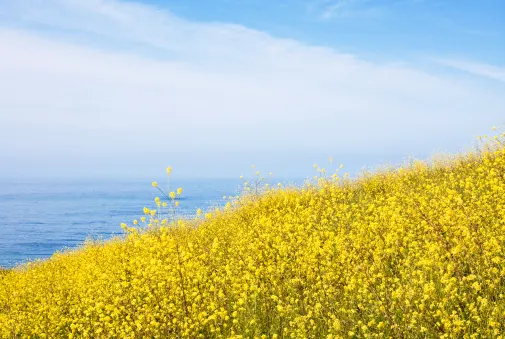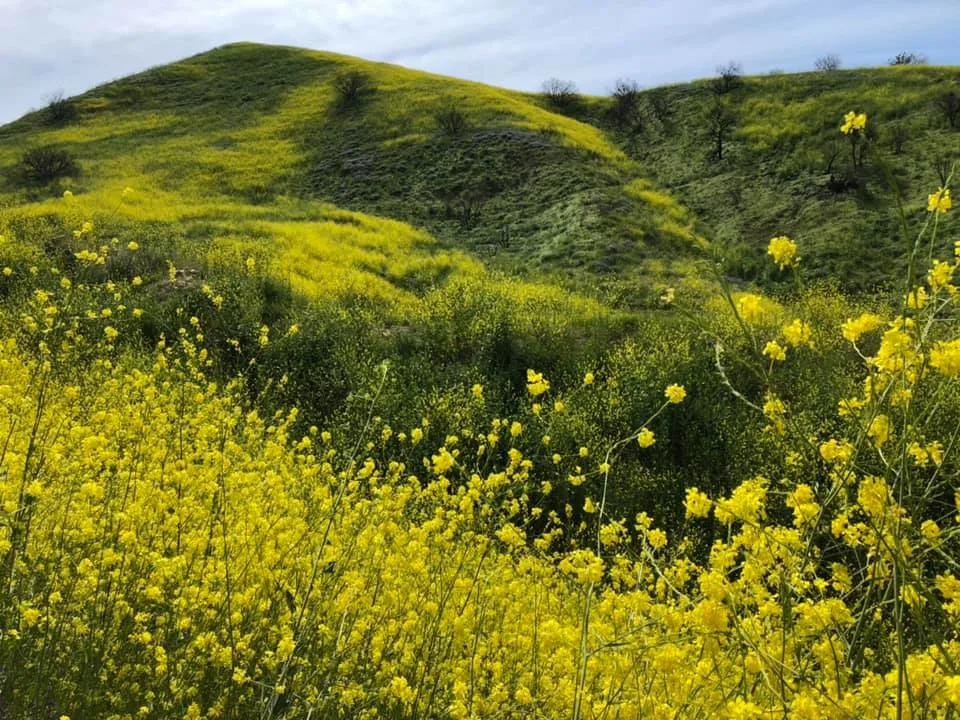
California's super bloom gives way to spicy new problem
Shakespeare warned us, but the saying holds true -- all that glitters is not gold. In this case, national park officials in California are warning that the latest wave of the super bloom might be pretty, but it poses a peppery problem.
"Biologists and ecologists say the region is simultaneously experiencing two very different types of a "superbloom" season - one comprised of stunning native wildflowers and the other made up of a pernicious weed called black mustard (Brassica nigra)," according to the Santa Monica Mountains National Park.
Visit our Complete Guide to Spring 2019 for an in depth look at the Spring Forecast, tips to plan for it and much more

Overgrown mustard in Santa Monica Mountains National Recreation Area. Image courtesy NPS.
While it makes for pretty pictures, black mustard is an invasive species running rampant in the wake of last year's deadly fires and the heavy rains that prompted the explosion of wildflowers this spring.
Mustard plants, some standing as high as ten feet tall, are dominating the fire-scarred areas of the Santa Monica Mountains in thick clumps that not only cause problems for those wishing to use area trails but post a real threat to native species as well.
SEE ALSO: 'Zombie plant' threatens to take over St. John River
"There are over 300 non-native species in the Santa Monica Mountains. A core group of them are considered the 'evil 25'," said Joseph Algiers, restoration ecologist for Santa Monica Mountains National Recreation Area, in an NPS dispatch -- the top 25 offenders when it comes to displacing native plants and reducing food for local wildlife, among other issues. These rapidly-spreading invaders choke out native plants, releasing chemicals that prevent the germination of competing seeds.
The stands of mustard plants are so thick in some areas that they've made trails impassable to humans and animals alike -- at least one person who responded to the NPS Facebook post on the subject reported seeing an influx of rattlesnakes on cleared paths because the mustard plants were so densely packed.

'Along both sides of the 101 Freeway, Pacific Coast Highway, Mulholland Highway and throughout the Santa Monica Mountains, these dense, deceptive weeds are ubiquitous.' Image courtesy NPS.
It's not just the growing plants that pose a problem.
"In the coming weeks, they will become a forest of dead brown stalks," says the NPS. Those dried plants themselves become another fire hazard for the dry season ahead.
RELATED: How invasive weeds make wildfires hotter, more frequent
Parks service restoration ecologist Algiers and volunteers do battle against the invasive plants on a regular basis through the growing season, but Algiers admits it is an uphill battle.
"It would probably be easier to get another man on the moon than to get rid of this invasive plant on a regional scale," Algiers told NBC last month.
Sources: National Parks Service | Architectural Digest | NBC |










